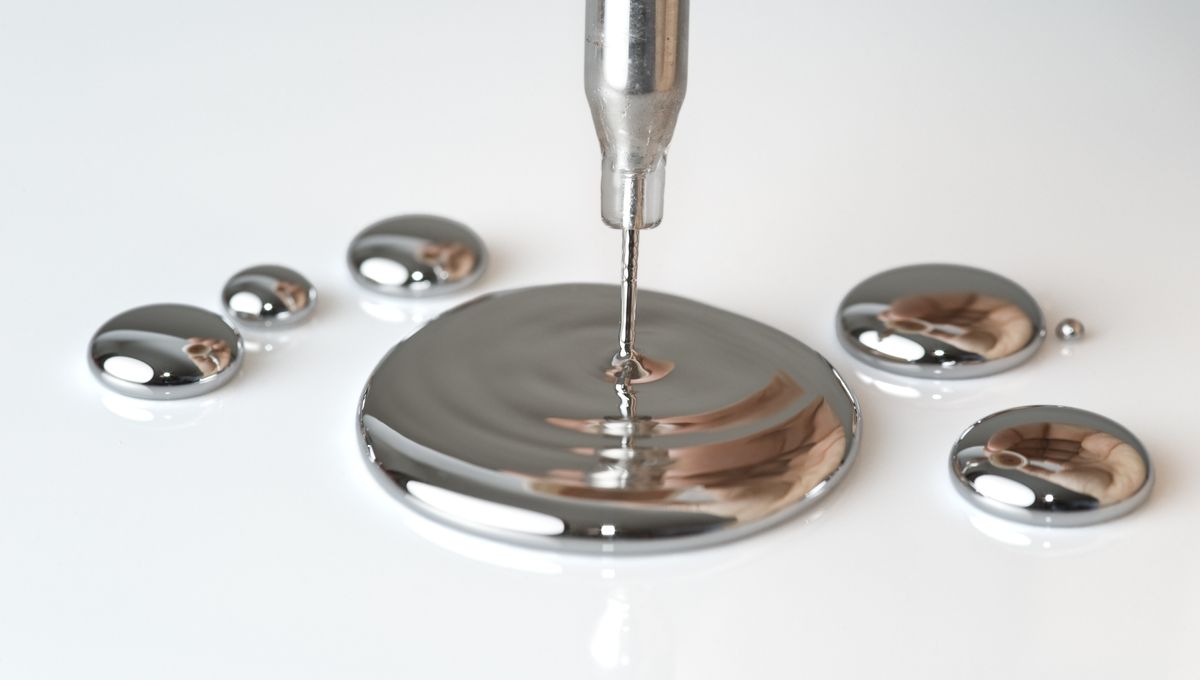
Quicksilver, also known as mercury, has long been used in the process of gold extraction. Its unique ability to bond with gold has made it a useful tool in mining, but this ancient practice comes with its own set of dangers. So, how exactly is mercury used to extract gold, what are the implications of this process, and why is it called quicksilver anyway?
Mercury has been in use in and around Egypt since as early as 1500 BCE, predominantly as a form of medicine, despite its high levels of toxicity. As the only element metal that’s liquid at room temperature, the name “quicksilver” originates from the Latin argentum vivum, which means “living silver”, referring to its fluid liquid state and silvery white coloration.
It’s also thought that mercury has been used as a tool for mining through the amalgamation of precious metals, like gold and silver, since 750 BCE. And, while variations in techniques have appeared in different periods throughout the world, the historic use of the amalgamation process shows significant similarities to those performed today.
How gold is extracted
But how exactly can liquid metal be used to remove gold fragments from rock? The process is generally performed on gold-bearing rock where the powdered gold fragments are so fine that other extraction methods would be less effective. Liquid mercury is mixed with the rocks and dissolves the gold fragments, leaving the rest of the rock behind and forming a gold-mercury alloy called gold amalgam.
Next, the crude gold amalgam needs to be separated from any unreacted mercury. This can be done by squeezing the liquid through a piece of porous material like chamois leather – made from the hide of a mountain goat called a chamois (Rupicapra rupicapra). This particular form of leather is popular due to its porosity, hardiness, and smooth surface.
This strained liquid is now a pure form of gold amalgam. To turn the amalgam into pure gold, the mixture is heated to a temperature of over 356.7 °C (674 °F), at which point the mercury turns to gas, leaving behind the gold, which has a much higher boiling point of 2,836 °C (5,137 °F).
However, this method of extraction produces a highly toxic form of vaporized mercury that can cause damage to the respiratory, gastrointestinal, and central nervous systems. Symptoms of elemental mercury vapor inhalation include difficulty breathing, vomiting, and headaches; for this reason, mercury is now less commonly used as an industrial method of gold extraction.
Issues with this method
While the process is no longer used on an industrial scale, it is still used in artisanal and small-scale gold mining, where its harmful effects aren’t diminished. According to a 2018 paper, these practices are currently the largest source of mercury pollution on Earth, with over 1,000 tonnes of vaporized mercury being released annually.
Additionally, the regions still practicing this extraction method are disproportionately made up of impoverished and exploited communities. Between 10 and 19 million people use mercury to mine for gold in more than 70 countries, and the vapor affects not only the health of the miners, but the health of ecosystems through the pollution of water sources, soil, wildlife, and food – leaving many mining communities battling with severe long-term health effects.
There are, however, methods to reduce the amount of mercury vapor produced – and some are quite inventive. Rough Science, a show co-produced by the BBC and Open University, details how the use of potato pieces in the boiling process works to absorb some of the excess mercury vapor.
Efforts to introduce portable and low-cost mercury sensors would also lower the risk of exposure for miners. With the help of chemists, environmental scientists, and public health officials, inexpensive and scalable mercury-free mining techniques are being suggested, along with novel methods to prevent mercury uptake in fish and food crops.
With continued effort and increased awareness around the devastating impact mercury pollution is having on communities and the environment, it’s hoped that alternative, safer solutions will soon take its place.
Source Link: What Is Quicksilver And How Is It Used To Extract Gold?